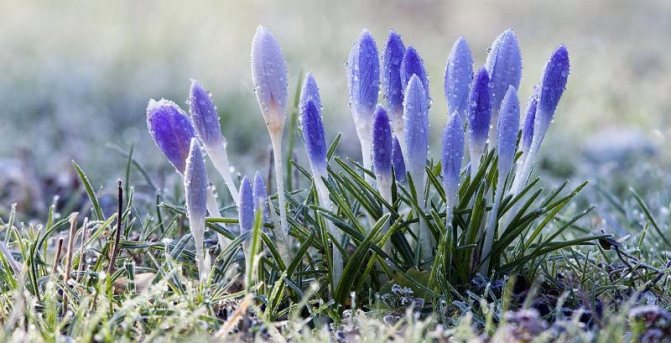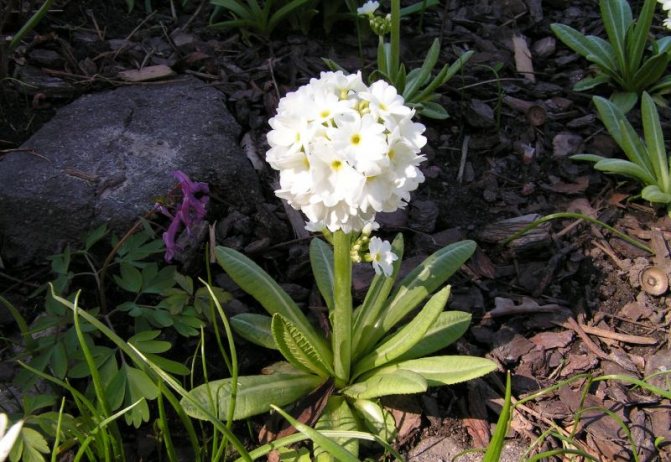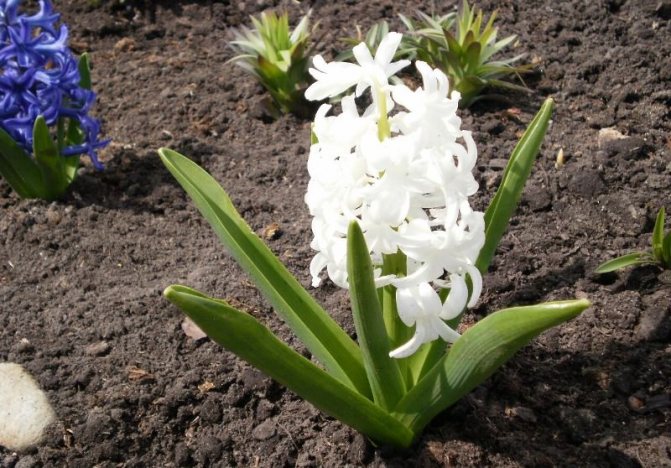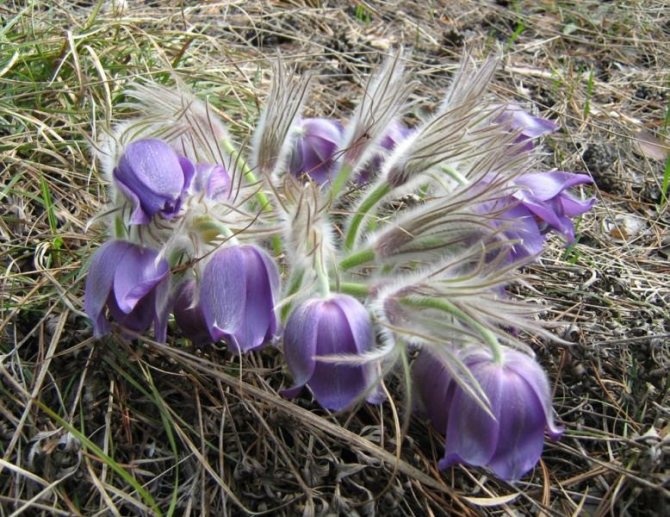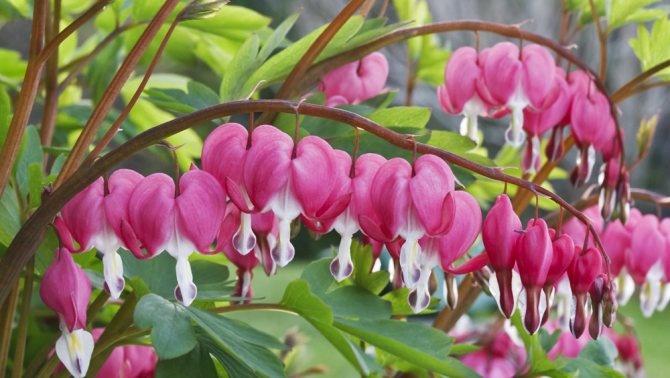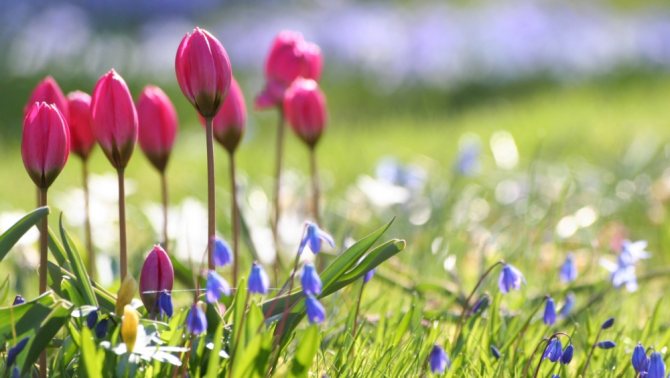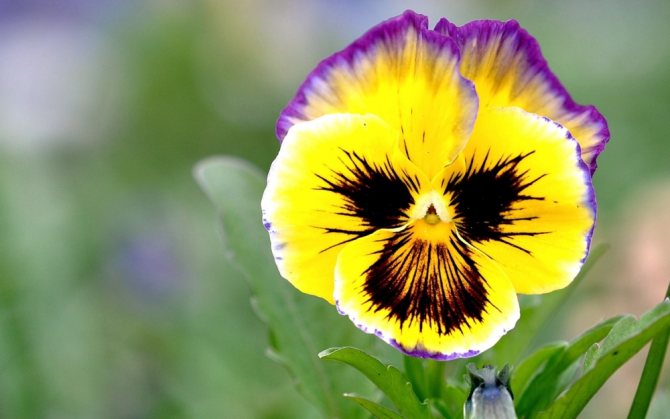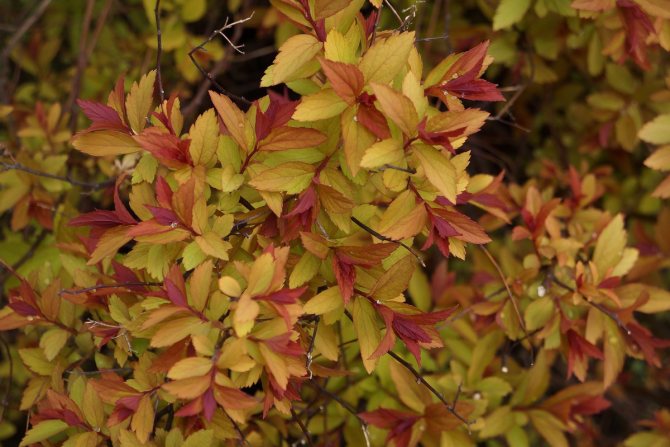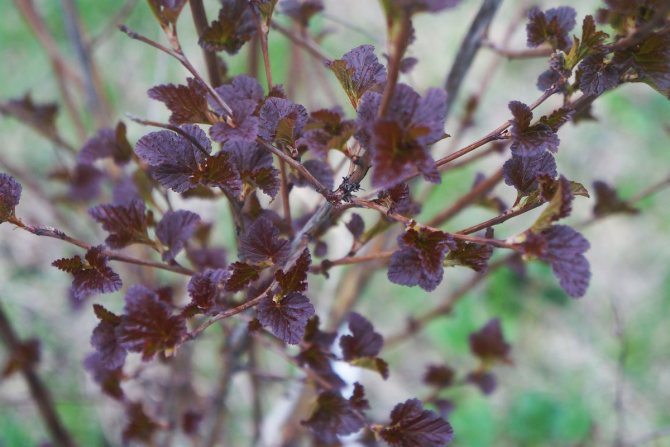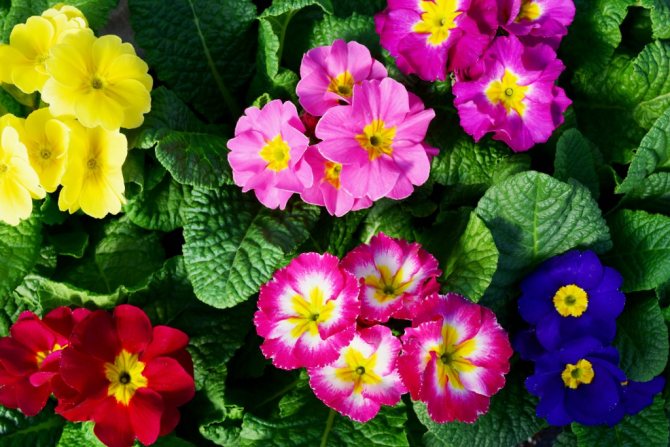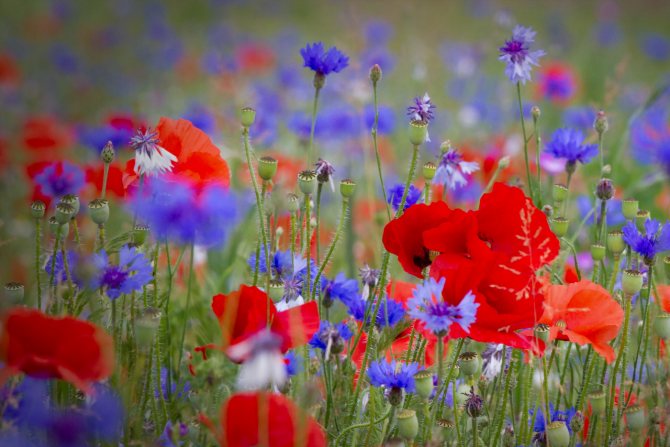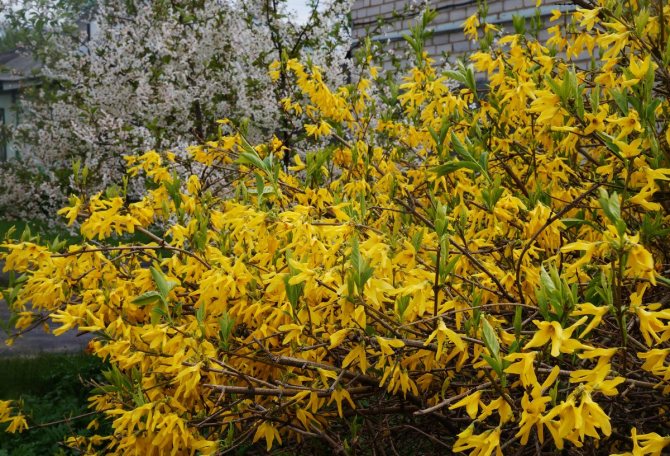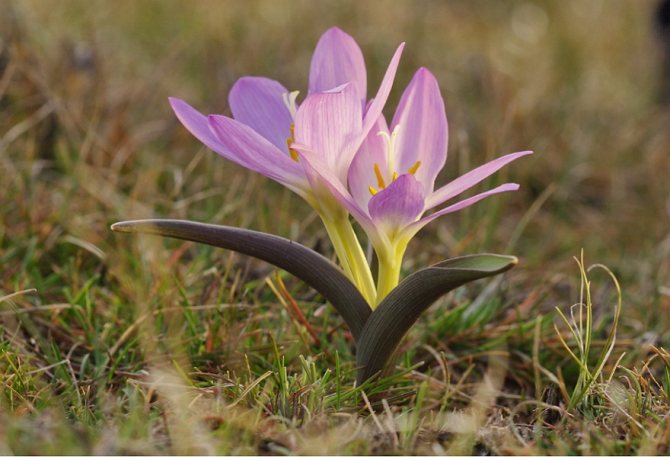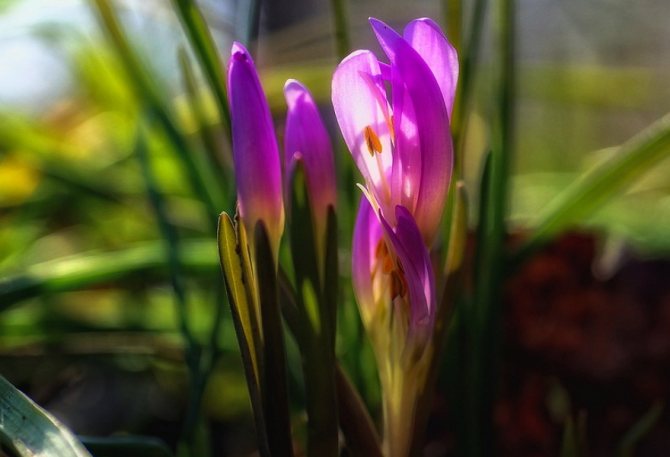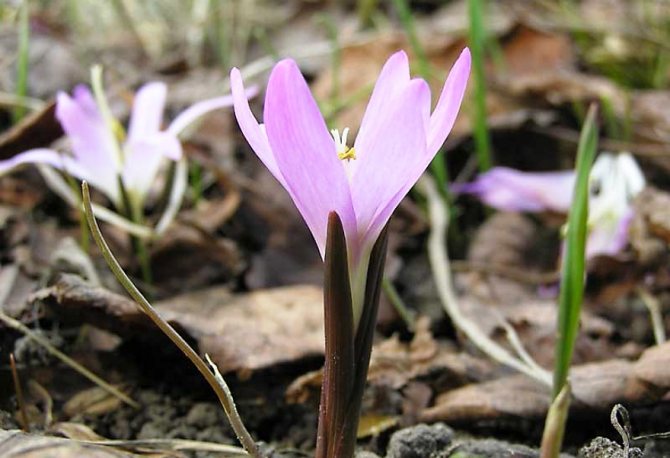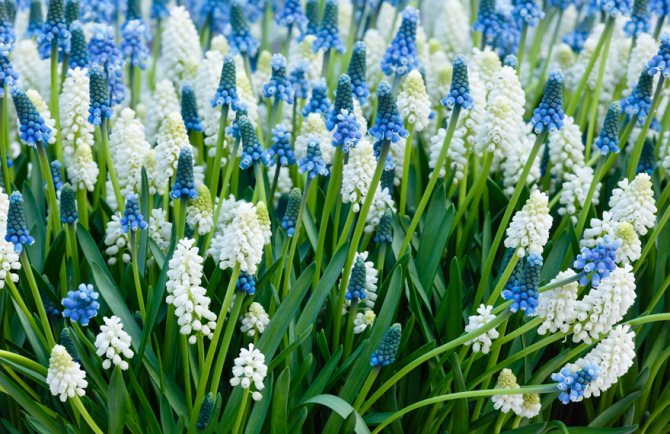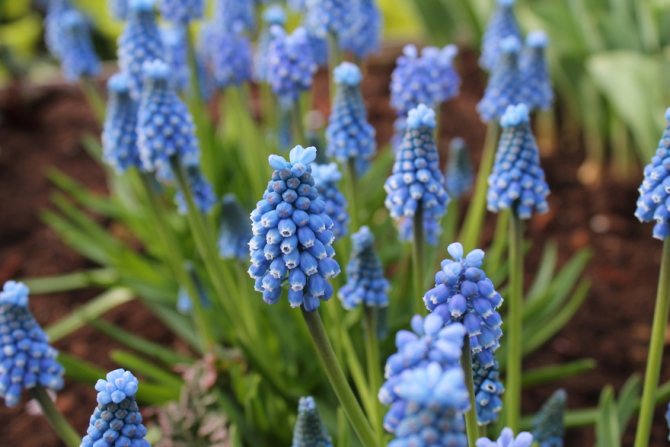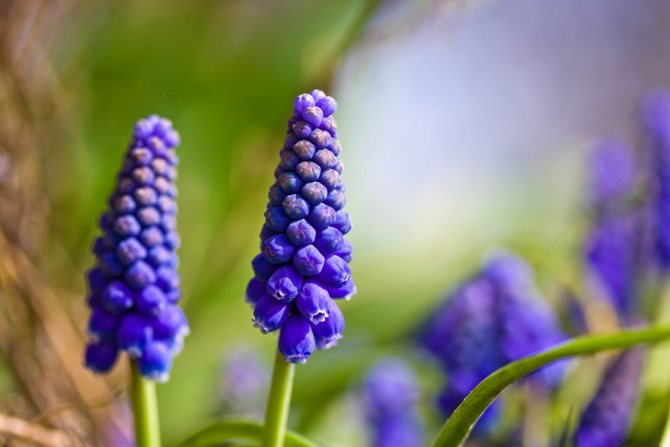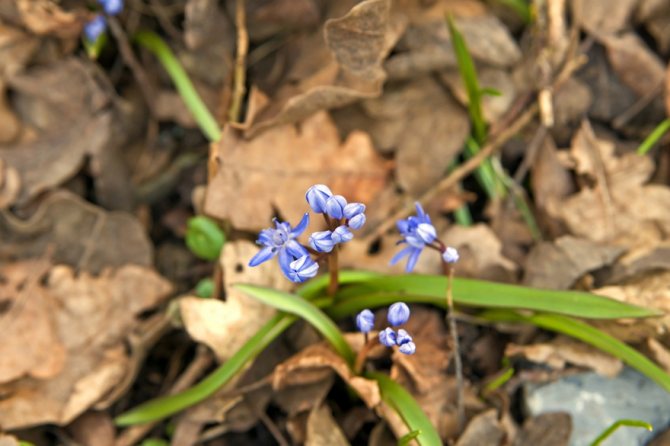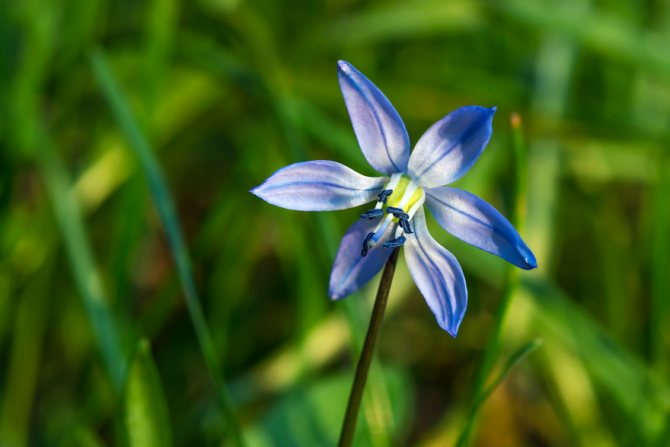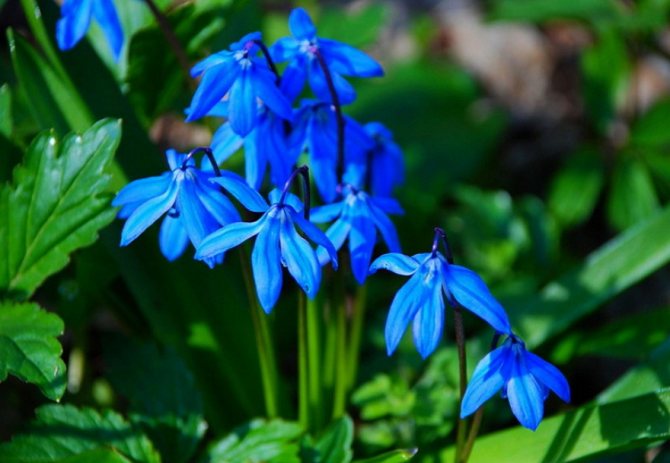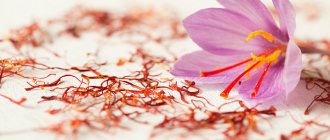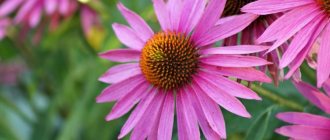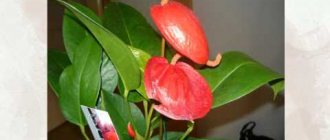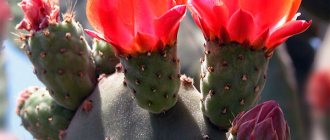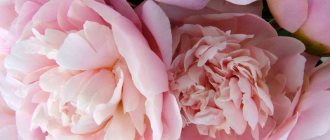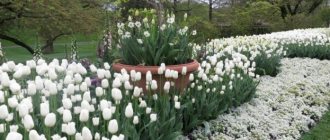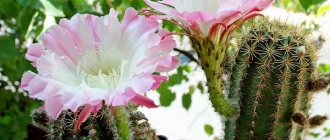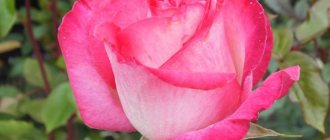Late winter and early spring: which comes first
In central Russia, primroses appear as soon as the snow has melted. The grass has not yet turned green, and bright colors are pleasing to the eye in the copses and on the plots.
The first of them is winter aconite or skullcap, erantis. Pale yellow, it looks great at flowering time, planted with a carpet under a shrub with a high crown.
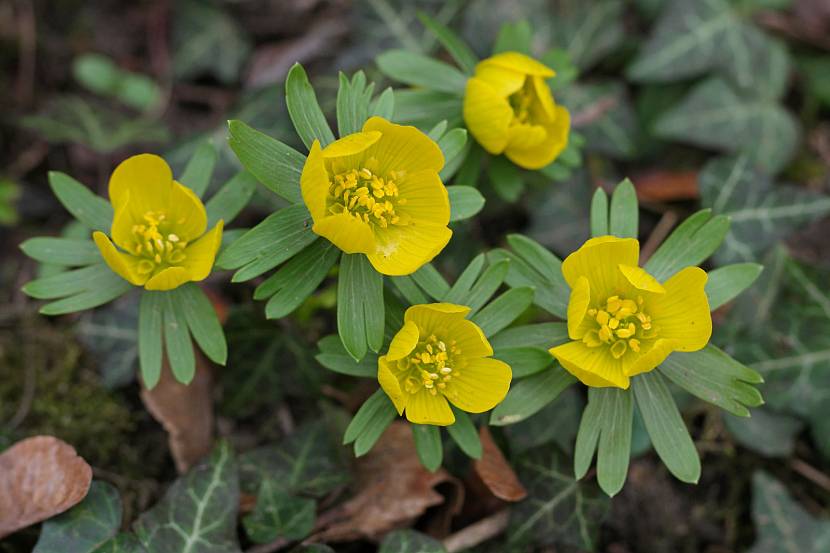
Erantis wintering blooms with a yellow carpet Source
Crocuses also make their way through the snow. These delicate crumbs are not afraid of the cold, they delight the eye, blooming literally on the black earth.
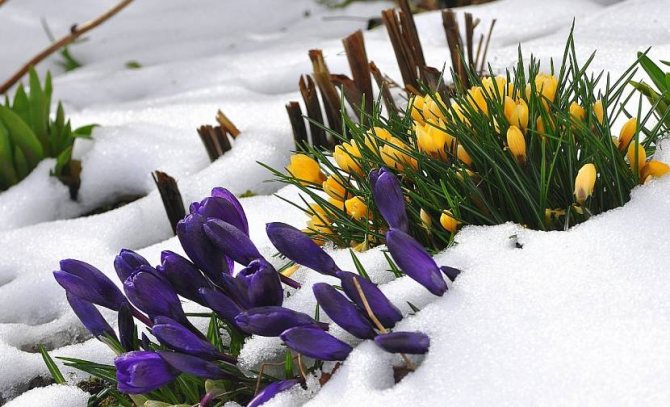

Crocuses bloom right in the snow Source artfile.me
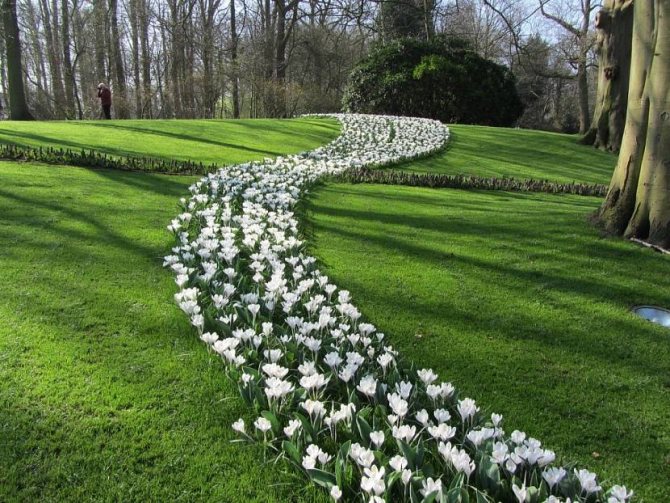

Crocuses on the lawn in the form of a flower path Source
In areas with mild winters, the Christmas rose, often called hellebore, is popular. At first glance, nondescript flowers are drawn to the first rays of the sun. They are found in different colors: from white to lavender.
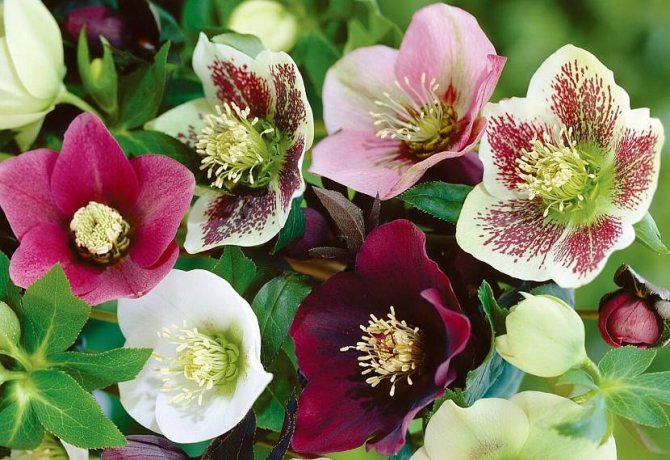

Hellebore of different colors


Christmas rose or hellebore in the garden Source
Another lover of mild winters is camellia. It is not for nothing that girls are called by the name of this flower, it is extremely delicate and resembles a rose.
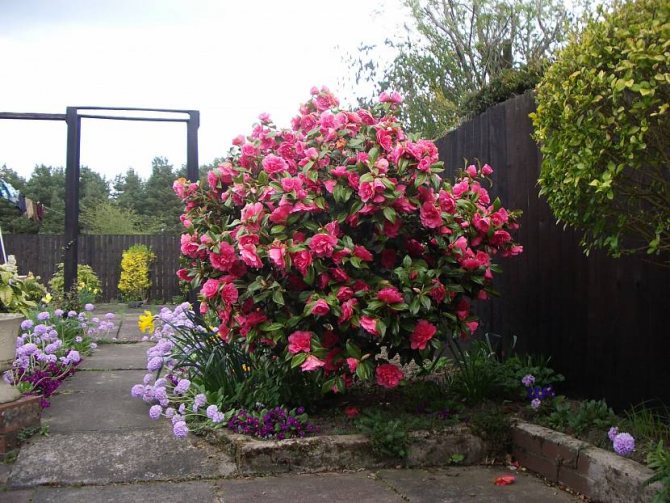

Camellia is sometimes confused with rose hips or roses Source
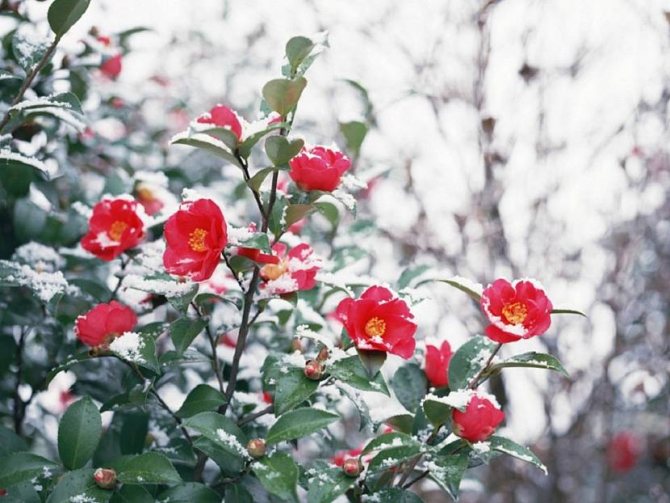

Camellia in winter Source
One cannot but recall the first harbinger of spring - the snowdrop. A white droplet on a thin stem means that the harsh winter is over.


Snowdrops - the first swallows of spring Source
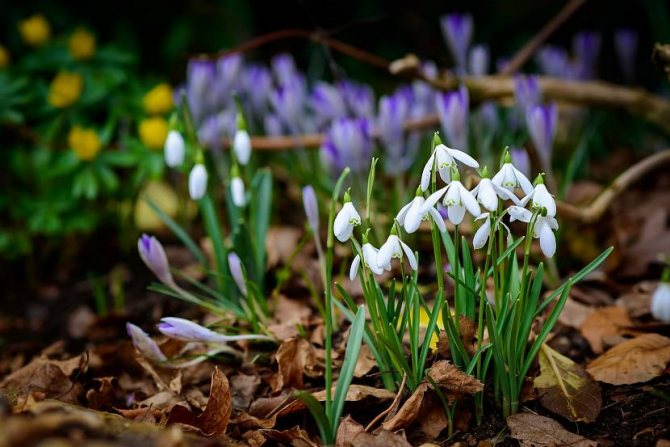

Snowdrop in Spring Source
As the snow melts, pale blue chionodox eyes appear in the areas. Everyone knows these flowers, but few remember their name.
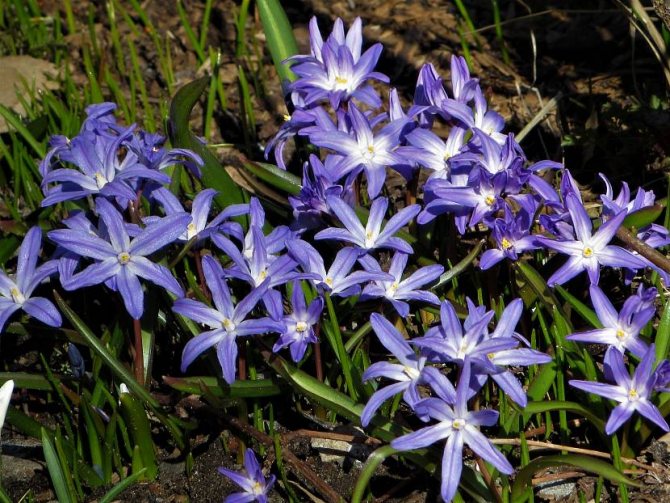

Chionodoxa blooms similar to hyacinth Source
Pansies are also familiar from childhood. They can often be found growing wild in meadows and fields. The decorative option is also called a violet. Blossom until it gets too hot.
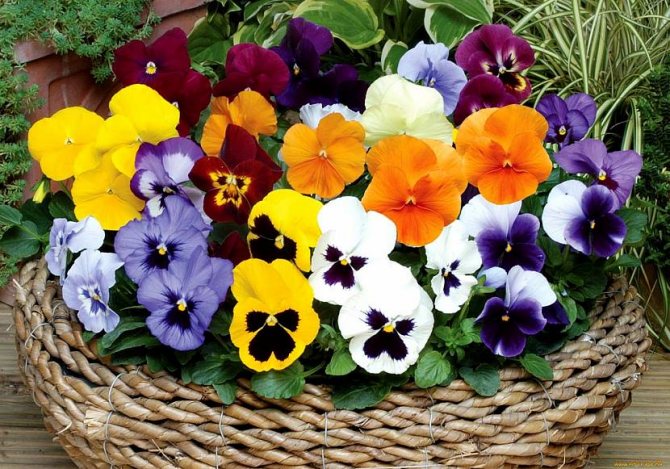

Decorative pansies Source artfile.me
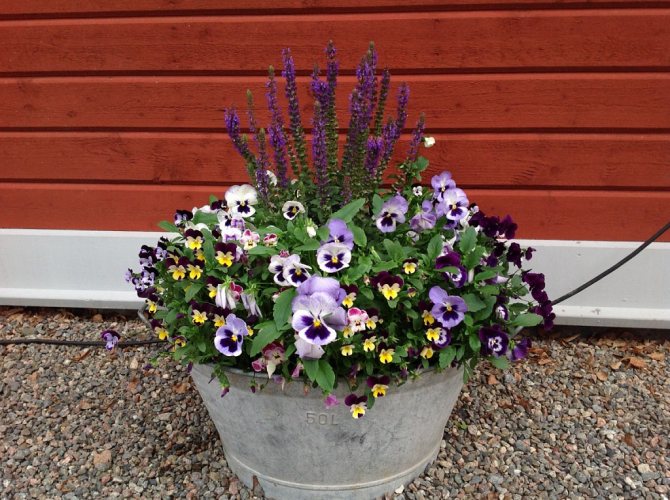

Pansies in a flowerbed in a composition with other flowers Source
See also: Arbor made of rounded logs
Types of primroses
All early flowering plants are called primroses. They bloom right after the snow has melted. Basically, the presented plants belong to deciduous forests. The thing is that it was they who had to adapt to early development in order to gain strength until the foliage blossomed on the trees.
Levkoin jaundice
Annual. Reaches up to 70 cm in height. The leaves are sharp. Flowers are small - up to 5 mm. Flowering occurs from May to August. Fruiting - from June to September. It prefers to grow in weedy meadows and forests, near water bodies, in vegetable gardens.
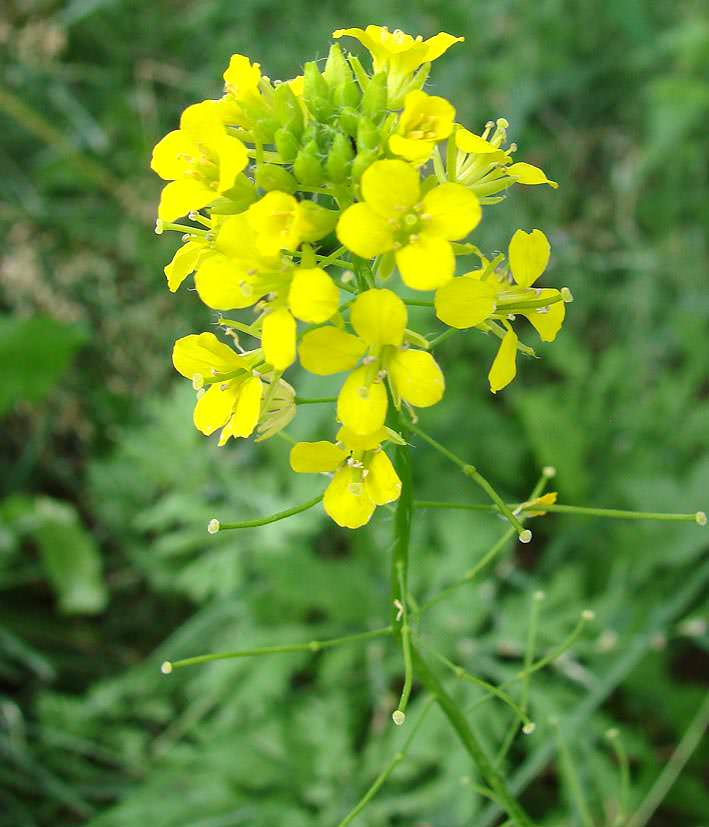

Kashubian buttercup
Perennial. It reaches a height of 60 cm. The rhizome is short. Flowers 2.5 cm in diameter, golden yellow in color. Flowering occurs from April to June. Prefers bright places, humus soils.
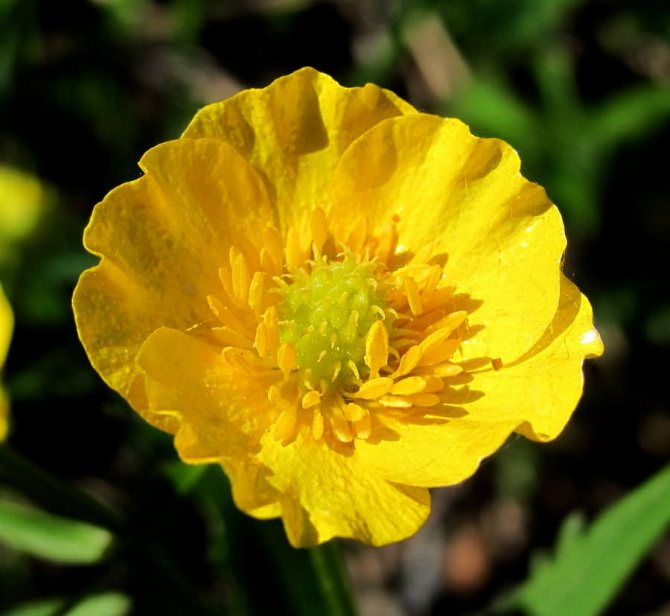

Obscure lungwort
Height - up to 30 cm. Flowers are tubular-bell-shaped, color - first pink, then blue-violet. It blooms from April to May. Prefers shade, grows in fresh, mineral-rich soils. Possesses medicinal properties.
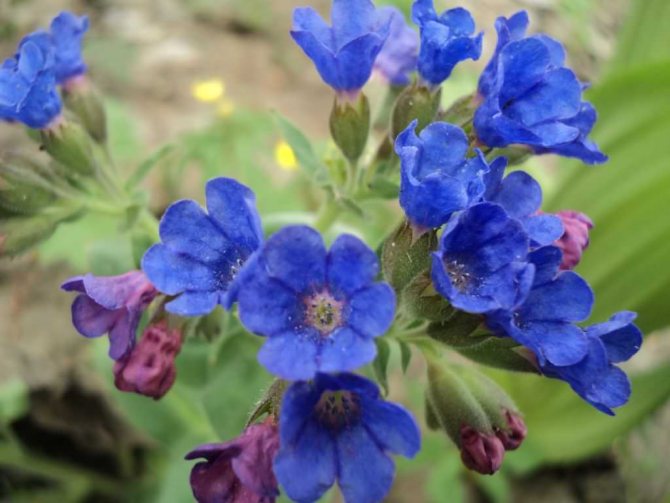

Lumbago uncovered
Perennial. It reaches a height of 20 cm. The flowers are large, bell-shaped, single. Color - blue-violet. Flowering occurs from April to May.Prefers dry, open areas. Poisonous.
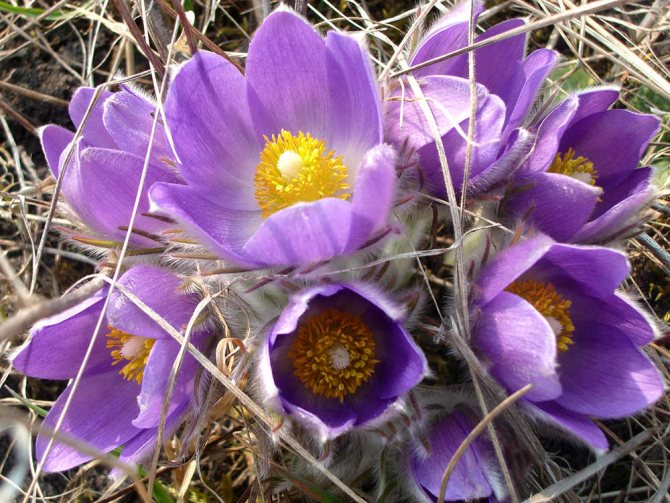

Marsh violet
Perennial. It reaches a height of up to 12 cm. Leaves are collected in a rosette. Flowers are odorless, light purple in color. Flowering occurs from April to June.
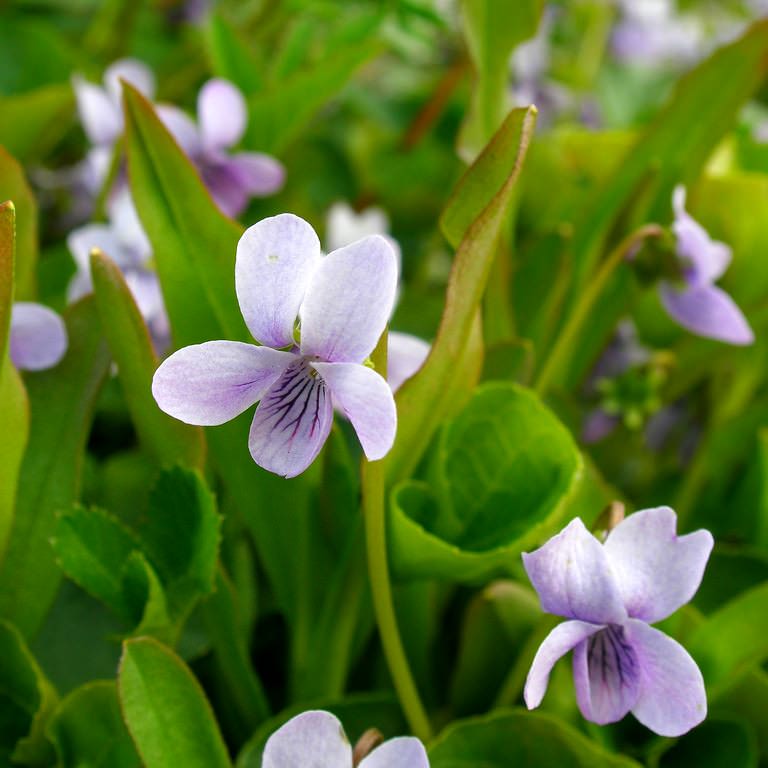

When the frost recedes
The sun warms the earth more confidently. The time comes for the next primroses to bloom, the garden changes its color, releasing the beautiful flowers of spring.
Daffodils and tulips - it is with them that schoolchildren go to the last call.
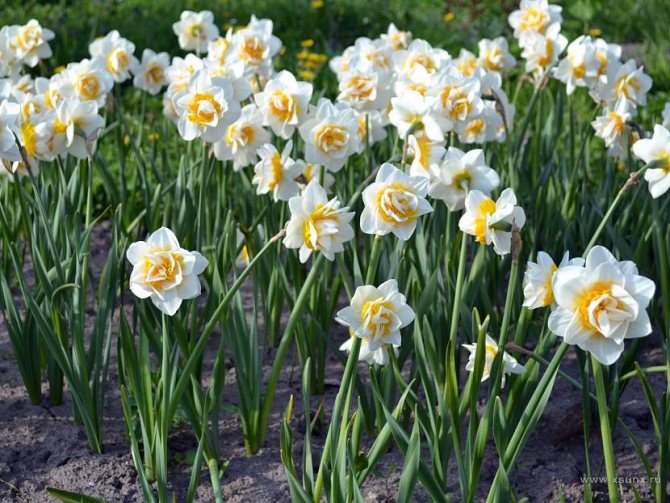

Daffodils bloom beautifully Source
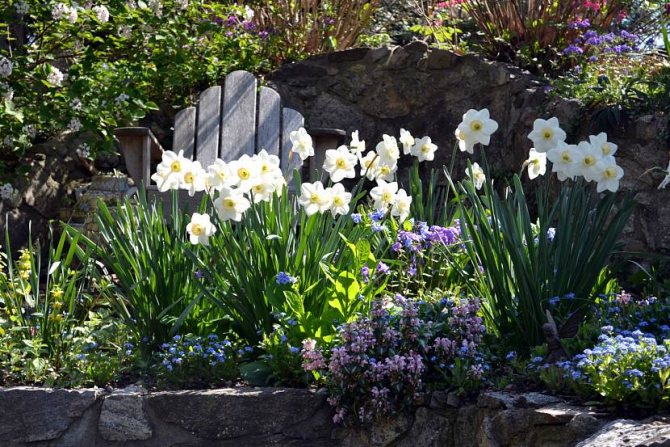

Daffodils adorn spring flower beds Source
Tulips are a symbol of International Women's Day on March 8th. At this time, they are brought to us from Holland or grown in advance in greenhouses, since March is still quite cold and snowy for growth.
But at the end of April they can already be found in city parks and in the grandmother's yard.
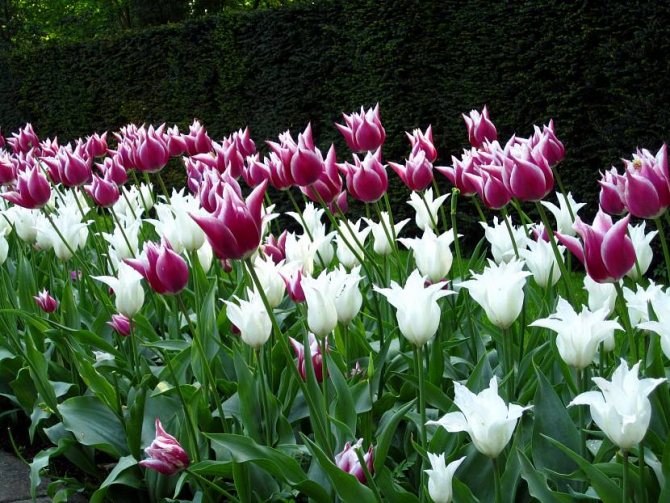

Tulips are more thermophilic flowers Source
The blooming of daffodils and tulips means May is just around the corner.
By the way, a large number of daffodils of various varieties have now been bred, not to mention tulips.
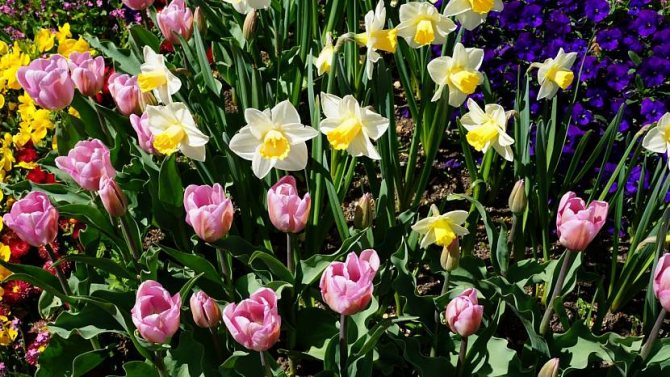

A flower bed of daffodils, tulips and pansies Source
Scylla is another familiar blue primrose. Outwardly, it somewhat resembles a chionodox. Usually planted in small bushes. But a solid flowering carpet looks especially impressive.
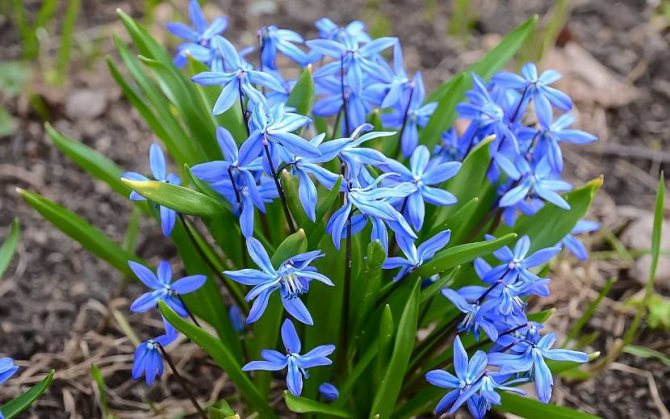

Light blue scilla will decorate your garden Source
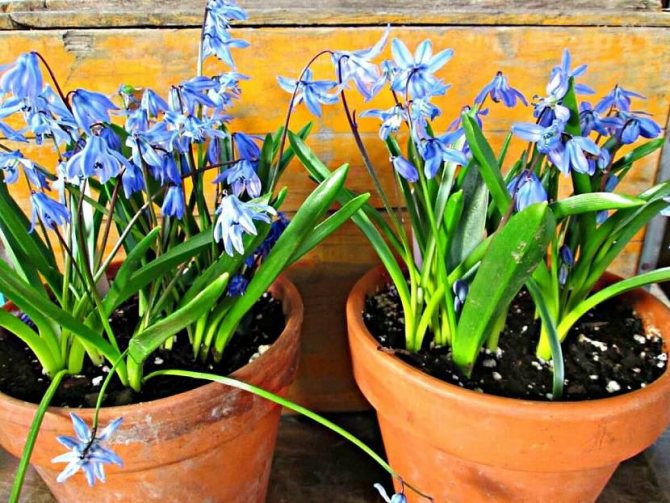

Scylla can be grown at home in a pot
See also: Landscaping and greenhouses
Allergy prevention in April
First of all, you should avoid those places where flowering trees or plants are concentrated. Do not use conditioners as they will also spread pollen. It is advisable to wear gauze bandages. It is not recommended to use cosmetics.


The nose can be rinsed with saline, it is imperative to do a wet cleaning at home. Nutrition should be correct, sometimes it is better to go on a hypoallergenic diet. It is worth starting to take antihistamines that ease the course of the disease.


The arrival of a warm pore after frost may not be at all pleasing, since the body may be weak to pathogens - allergens, and then the person begins to show allergy symptoms. It can proceed in different ways, the main thing with the first malaise, you should immediately contact a specialist to establish the cause and correct treatment. After all, the main flowering period for trees and plants falls in April.
Late spring flowers
In late spring - in May - fragile lilies of the valley bloom. Some of their varieties are listed in the Red Book, but still they are common garden plants.
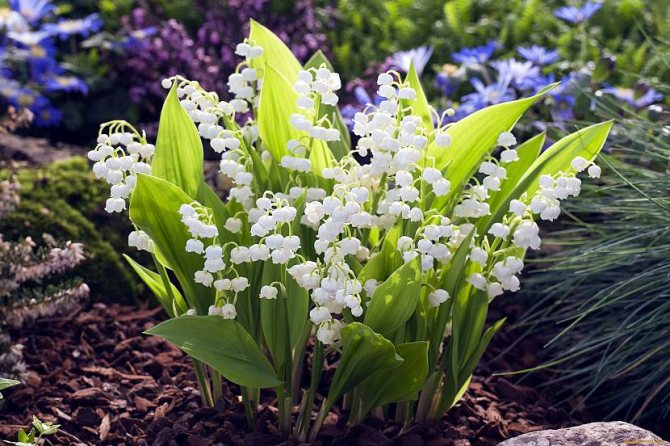

Lilies of the valley - light May hello Source artfile.me
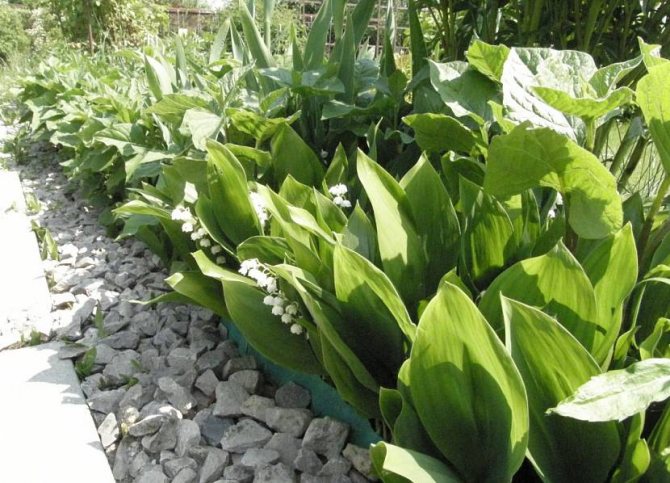

Lilies of the valley in a garden composition Source
Peonies are also late spring flowers. Bright hats are a real decoration of the site! They are great in bouquets, especially small varieties and inflorescences.
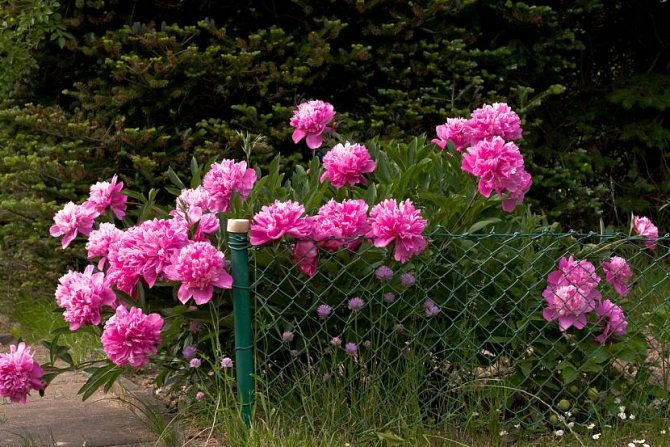

Peonies will decorate any garden
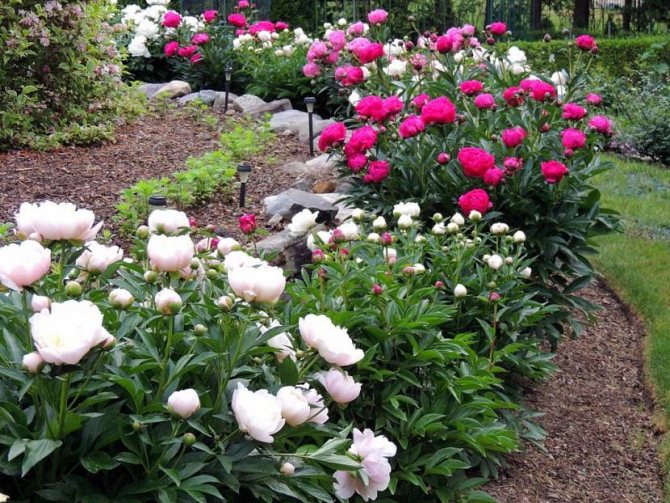

Flower garden with peonies Source
In spring, flowering shrubs delight the eye: spirea and lilacs. Spirea of the Grefsheim variety in bloom resembles a snow-white cloud.
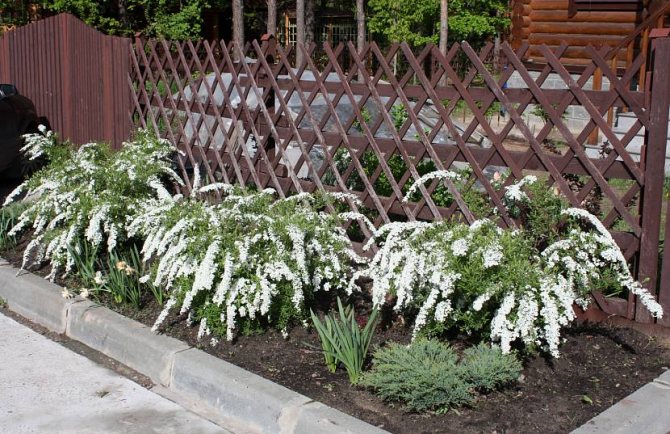

White spirea blooms spectacularly Source
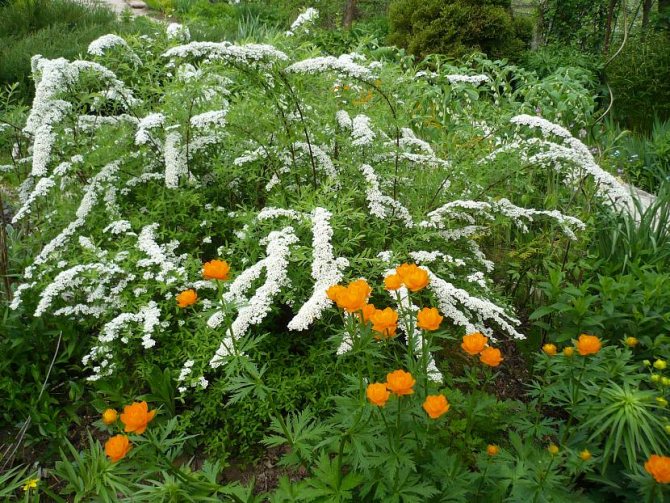

Spirea Matches Swimsuit Source
And lilac - white and colored - will fill everything around with an enchanting aroma.
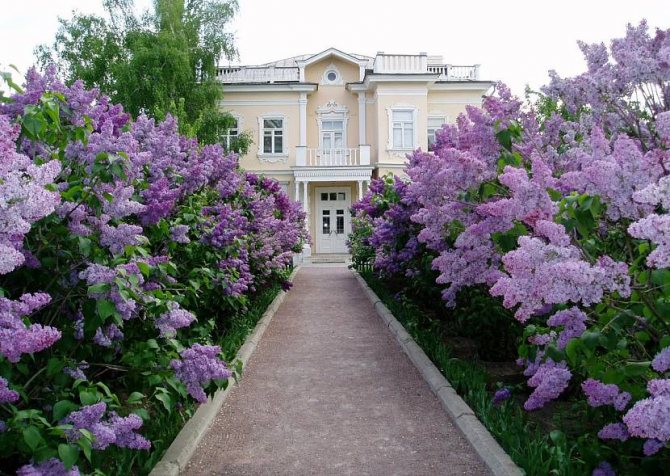

Lilac Alley Source
Planting such plants
The best time for planting bulbs (snowdrops, woods, crocuses, etc.) is the end of August - September. Bulbous plants are planted 5-7 cm deep, about 7-10 cm apart. When planted with seeds, the first spring flowers will bloom at 2-3 years of age.
- If you have a pond or moisture source in your garden, plant a marsh marigold next to it. With its juicy flowering, it will decorate any garden and attract the attention of insects. Disembark in the fall.
- Early flowers coexist well with late perennials, which bloom in late summer and autumn, as well as undersized and weaving plants.
- For a full-fledged spring "harvest" with an autumn transplant, the first thing to do is prepare the soil. To do this, the site is dug up, fertilizers, compost are applied and they are allowed to rest for 2-3 weeks, after which the bulbous plants are transplanted.
The first flowers in spring do not bloom as long as we would like, but with their appearance, nature and soul wake up. After all, after the gray winter days and frosts, it is so nice to see the revival of life. When these little messengers appear, it immediately becomes clear - spring has come, which means that the long-awaited warmth and fine days are approaching. Do not forget to properly care for spring primroses, and they will delight you for more than one year!
Bouquets of spring flowers in the interior
You want to feel the arrival of warmth not only in the garden, but also at home. Decorating the interior with primroses gives this opportunity to everyone. Delicate, often modest, but bright, they are appropriate in a country house, in a city apartment and a chic mansion.
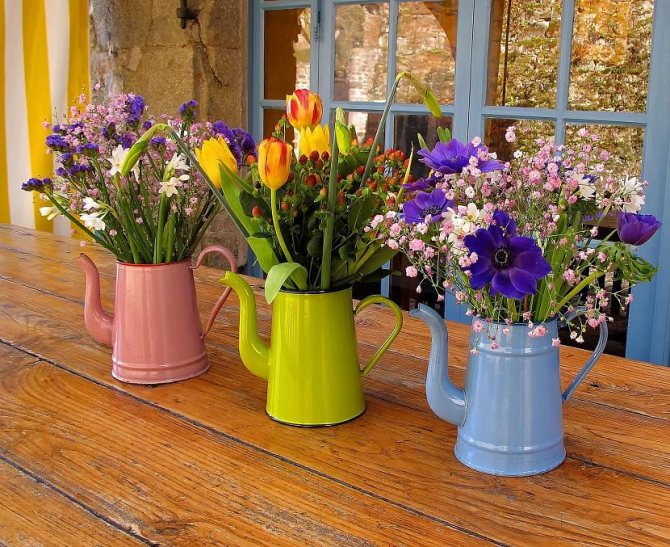

Spring bouquets bring inspiration
When composing a bouquet, you can give preference to one range - white or blue, or collect all the riot of spring colors.


Bouquet of tulips in the interior of the living room


Turquoise interior with spring bouquet
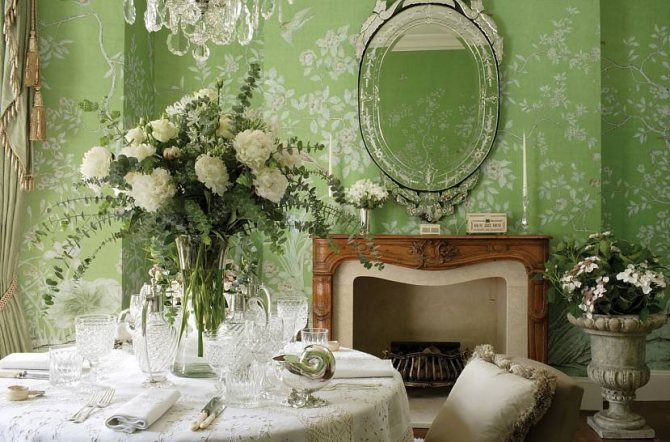

Snow-white flowers in a green living room Source
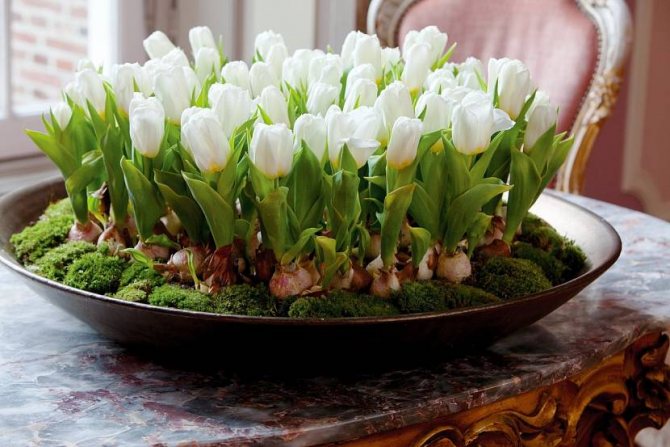

The bouquet can be grown on a windowsill from an onion
Variety of primrose species
In total, there are about 500 species of primroses in the world. They differ in the shape and color of the leaves, flowering time. Many types are medicinal.
- A tall primrose is actually a short plant. Its length reaches only 40 cm. The flowers are light yellow. Prefers loose and moist soils, shade. Often found in Altai and Asia Minor. It is absent in the wild on the territory of the Russian Federation.
- A mealy primrose grows up to 20 cm long. Its foliage is covered with a yellow or white mealy bloom. The color of the flowers is violet-pink, lilac. Inside each flower there is a bright eye - it reaches 1 cm. In the wild, primroses can be found in the northern part of European Russia, the Far East and southern Siberia. Decoctions and infusions made from this plant are actively used to treat dermatitis.
- Spring primrose is a perennial. Its height reaches 30 cm. The stem is leafless, the rhizome is short. The tops of the leaves are slightly dull. The flowers are bright yellow, have a honey smell. The fruit is a multi-seeded brown box. The leaves contain ascorbic acid.
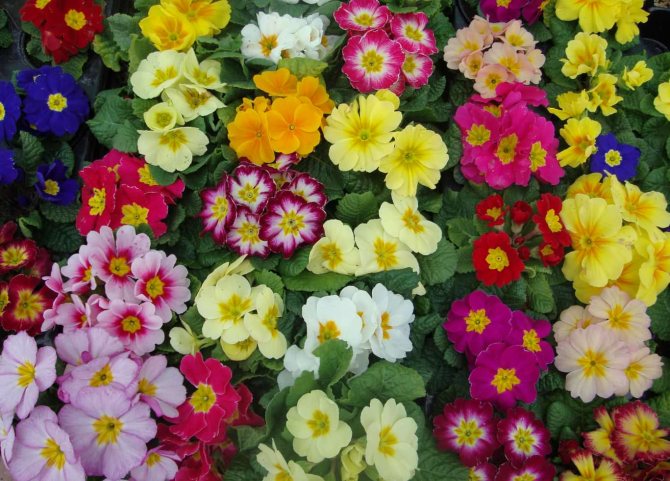

Video description
In this video you will see examples of the use of fresh flowers in the interior.
Bulky vases are not suitable for them: it is better to put single flowers in glass vases or even ordinary bottles of different sizes. And even an ordinary jar with a cute bunch of woodland, anemone and pansies looks airy and touching!
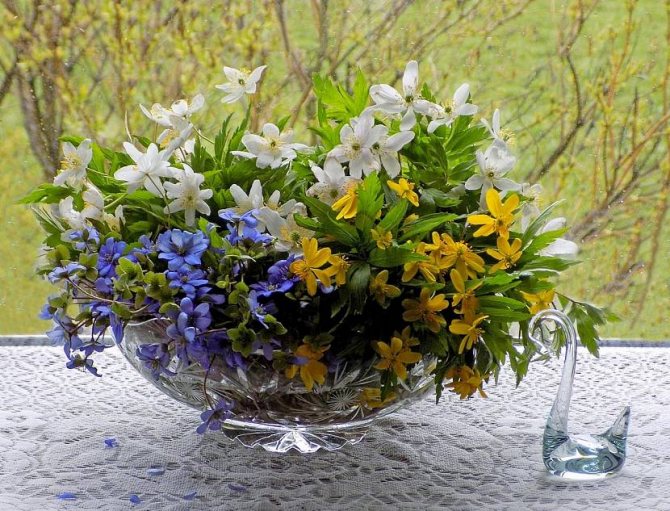

For spring flowers, air vases are suitable.
Muscari (mouse hyacinth)
Despite their diminutive size, these flowers are very visible due to their bright color. They can be grown in curtains or combined with other bulbs - in any case, muscari will not get lost in the flower bed. They are completely unpretentious and grow very quickly. The earliest species and varieties bloom in April.
Proleska (scilla)
Sky blue drooping flowers on thin legs - the forest can not be confused with any other plant. In favorable conditions, this sissy blooms in March. Scylla is a surprisingly unpretentious plant: planted and forgotten. And in the spring, the flower itself will remind of itself with miniature buds.

